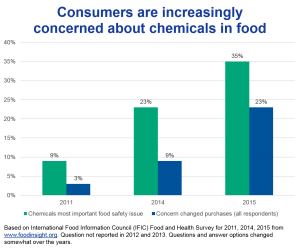Lindsay McCormick is a Research Analyst.
Asthma presents a huge public health challenge. Over the past few decades, asthma rates in the U.S. have nearly tripled – increasing from 3.1% in 1980 to 8.4% in 2010. Today, more than 25 million people suffer from this chronic respiratory illness.
While air pollution and allergens like pet dander are clearly big triggers for asthma, we know that certain chemical exposures play an important role as well. A number of chemicals used in everyday consumer products – from household cleaners and building materials to shampoos and cosmetics – are known or suspected “asthmagens”– environmental agents that cause or exacerbate asthma. Unfortunately, such chemicals are poorly regulated and we, as individuals, rarely have any way of knowing which ones are lurking in our environment.
EDF recently conducted a pilot project to explore which chemicals we are exposed to in our day-to-day lives. The project employed simple chemical-detecting wristbands that absorb certain chemicals present in the environment. We enlisted 28 volunteers to become “environmental sensors” for a week by wearing the wristbands.
Among the results: Over the course of that week, the participants came into contact with a total of 57 potentially hazardous chemicals, 16 of which are linked to respiratory health effects such as asthma. Read More











